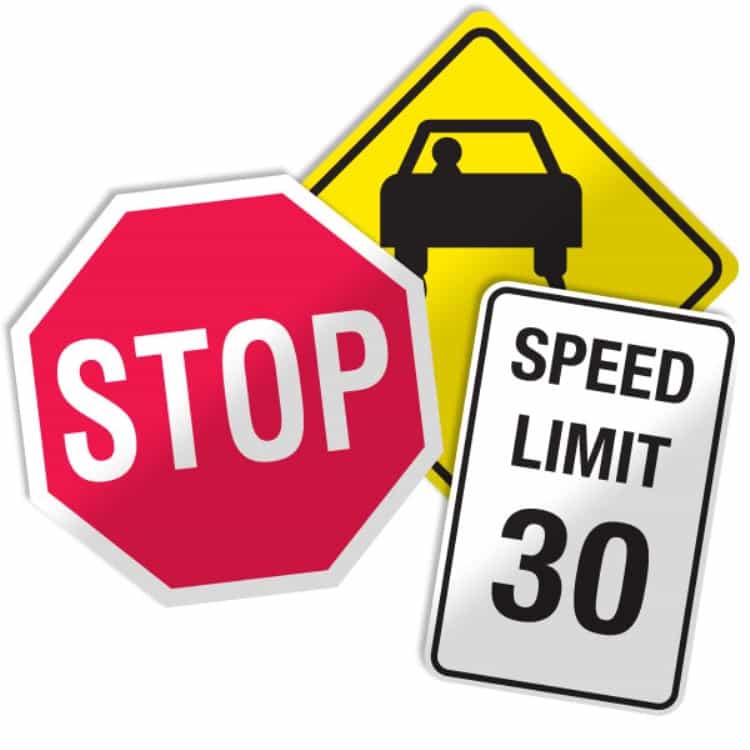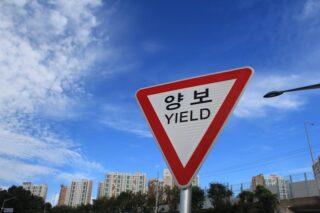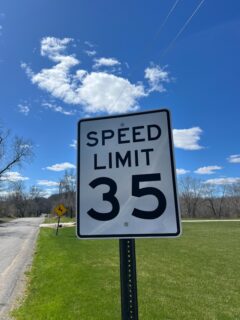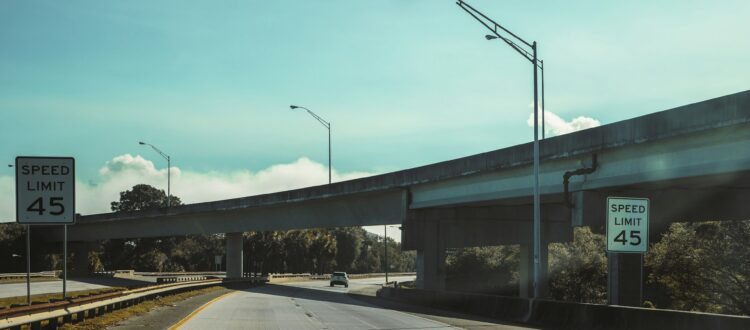Regulatory traffic signs are a crucial component of road safety and traffic management. These signs are designed to inform drivers about specific laws, regulations, and restrictions that must be adhered to while navigating the road network.
From speed limits and parking regulations to right-of-way rules and turning restrictions, regulatory traffic signs play a vital role in guiding drivers and ensuring the smooth flow of traffic. By clearly communicating essential information, these signs help promote order, safety, and efficiency on the roads, ultimately contributing to the overall well-being of both drivers and pedestrians. Understanding their meaning and significance is essential for all road users to maintain a safe and harmonious driving environment.
What Does Regulatory Mean for Traffic Signs?
 The term “regulatory” in the context of traffic signs refers to the authoritative rules and laws that govern the behavior of drivers on the road. These signs convey specific instructions and restrictions that drivers are required to follow by law. They are designed to regulate traffic flow, ensure safety, and prevent conflicts on the road. They carry the force of law, and disobedience can result in legal consequences.
The term “regulatory” in the context of traffic signs refers to the authoritative rules and laws that govern the behavior of drivers on the road. These signs convey specific instructions and restrictions that drivers are required to follow by law. They are designed to regulate traffic flow, ensure safety, and prevent conflicts on the road. They carry the force of law, and disobedience can result in legal consequences.
Regulatory traffic signs include speed limit signs, stop signs, yield signs, no parking signs, and other directives that dictate the permissible and prohibited actions of drivers. Understanding and obeying regulatory traffic signs is essential for maintaining order and safety on the roads.
What Material are Regulatory Traffic Signs Made of?
They are made of durable and weather-resistant materials to ensure longevity and visibility on the road. The most common materials used for manufacturing these signs include aluminum, fiberglass, plus various types of reflective sheeting. Aluminum is a popular choice due to its lightweight nature, resistance to corrosion, and ability to withstand harsh outdoor conditions. Steel may also be used for certain traffic signs, especially in areas where additional strength and durability are required.
Reflective sheeting is applied to the sign’s surface to enhance visibility, especially during low-light conditions or at night. This sheeting is often made of materials such as high-intensity prismatic sheeting or engineer-grade reflective film, which effectively reflect light from vehicle headlights, making the signs easily noticeable to drivers.
Colors and Shapes of Regulatory Traffic Signs
Regulatory traffic signs employ distinctive colors and shapes to convey specific messages and commands to drivers.
Colors:
 1. Red: Used for “STOP” and “YIELD” signs, and the like, critical directives requiring immediate attention and compliance.
1. Red: Used for “STOP” and “YIELD” signs, and the like, critical directives requiring immediate attention and compliance.
2. White: Used as a background color, often utilized for speed limit signs and other regulatory messages. Also as the copy color on darker traffic signs such as green street signs, blue informational signs, etc.
3. Black: Employed for signs conveying specific information, such as speed limit signs or directional signs on a white background.
4. Green: Utilized for signs indicating permitted movements or providing guidance, such as directional freeway signs and street signs, etc.
Shapes
 1. Octagonal Signs: Convey mandatory instructions, such as stop signs.
1. Octagonal Signs: Convey mandatory instructions, such as stop signs.
2. Rectangular Signs: Convey regulations and guidelines, such as speed limit signs.
3. Triangular Signs: Yield Signs
4. Diamond Signs: Square signs rotated 45 degrees, caution and warning signs often used for construction zones and signs alerting drivers to unusual conditions.
Understanding the significance of the colors and shapes of regulatory traffic signs is essential for drivers to accurately interpret and respond to the information presented on the road.
Common Regulatory Traffic Signs
1. Stop Signs: Indicates the requirement to come to a complete stop before the stop sign and possibly yield to other traffic before proceeding.
2. Yield Signs: Indicates the need to slow down on approach and yield to all other traffic. It is not necessary to stop if there are no other vehicles present.
 3. Speed Limit Signs: Convey the maximum speed at which vehicles are permitted to travel on a particular road or highway.
3. Speed Limit Signs: Convey the maximum speed at which vehicles are permitted to travel on a particular road or highway.
4. Do Not Enter Signs: Indicates that entry into a specific area or roadway is prohibited.
5. No Left Turn/No Right Turn Signs: Prohibits vehicles from making left or right turns at specific intersections or locations.
6. One Way Signs: Indicates that the road or street is designated for one-way traffic only.
7. Handicapped Parking Signs: Designates parking spaces reserved for individuals with disabilities.
8. High Occupancy Vehicle (HOV) Signs: Designates lanes reserved for vehicles with a minimum number of occupants, typically to encourage carpooling.
Compliance to MUTCD Standards
The compliance of regulatory traffic signs with the Manual on Uniform Traffic Control Devices (MUTCD) standards is crucial for ensuring consistency, clarity, and effectiveness in conveying traffic regulations and directives. The MUTCD provides national guidelines for the design, placement, and usage of traffic control devices, including regulatory signs, across the United States. Adhering to the MUTCD standards ensures that regulatory traffic signs are uniform in design, making them easily recognizable and understandable for drivers nationwide.
Also, compliance with MUTCD standards promotes safety and efficiency on the road by maintaining consistent traffic control measures. By following the MUTCD guidelines, regulatory traffic signs can effectively communicate essential information to drivers, contributing to a safer and more organized transportation system.
Conclusion
Regulatory traffic signs play a vital role in maintaining order, safety, and efficiency on the roads. Through their distinctive colors, shapes, and compliance with the MUTCD standards, these signs effectively communicate essential information to drivers, ensuring they understand and comply with traffic regulations and directives. The use of durable materials, such as aluminum and steel, coupled with reflective sheeting, enhances the visibility and longevity of regulatory signs. By understanding the colors and shapes of these signs, drivers can quickly interpret the messages conveyed, promoting safe and responsible driving behavior. Overall, they are essential tools in creating a well-organized and secure transportation system, enabling drivers to navigate roads confidently while reducing the risk of accidents and promoting a smoother flow of traffic.
Popular Posts:




